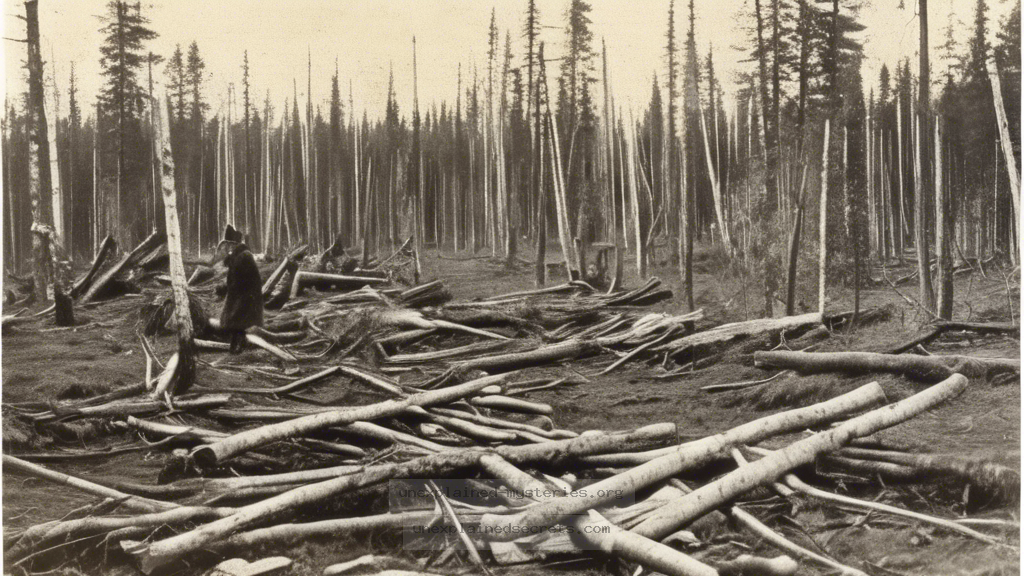What Causes the Mysterious Tunguska Event of 1908?
What Causes the Mysterious Tunguska Event of 1908?
The Tunguska Event of 1908 remains one of the most perplexing and unexplained incidents in scientific history. Occurring in a remote part of Siberia, this massive explosion flattened over 2,000 square kilometers of forest, yet it left no definitive impact crater or any identifiable remains of a meteorite. The sheer magnitude of the explosion, estimated to be 10-15 megatons of TNT, raises questions about what could have caused such a phenomenon. Understanding the Tunguska Event matters not only for historical context but also for ongoing discussions about planetary defense and our understanding of cosmic events.
Historical Context of the Tunguska Event
The Tunguska Event took place on June 30, 1908, near the Tunguska River in Siberia, Russia. This was a time when the scientific community was beginning to understand the nature of meteoric phenomena, yet the technology to properly investigate such events was limited. Initial reports of the explosion came from local residents and scientists who were intrigued by the mystery. As the first expeditions to the site began, researchers were baffled by the lack of a crater, leading to various theories about what might have occurred. In the early 1900s, the idea of extraterrestrial objects colliding with Earth was still considered radical, and this incident pushed the boundaries of that discourse.
Core Theories Surrounding the Event
Several hypotheses have been proposed to explain the Tunguska Event, each varying in plausibility and acceptance within the scientific community:
- Asteroid or Comet Impact: The most widely accepted theory is that a small asteroid or comet exploded in the atmosphere, releasing energy equivalent to a large nuclear bomb. This explosion would have caused the extensive tree damage observed in the area.
- Nuclear Reaction: Some scientists speculated that a natural nuclear reactor, using uranium deposits, could have caused the explosion. However, this theory lacks substantial evidence.
- Volcanic Activity: The lack of a crater led some to propose that volcanic activity could be responsible for the event. However, there was no volcanic activity recorded in the area around the time of the explosion.
- Extraterrestrial Craft: A more fringe theory suggests that the explosion could have resulted from a malfunctioning alien spacecraft. This has been widely dismissed by the scientific community but remains a popular element of conspiracy theories.
Key Point: The prevailing theory among scientists today is that the Tunguska Event was caused by the airburst of a small asteroid or comet, disintegrating at an altitude of 5 to 10 kilometers above the Earth’s surface.
Scientific Implications of the Tunguska Event
The implications of the Tunguska Event extend far beyond its immediate impact. It highlighted the potential danger of near-Earth objects (NEOs) and led to increased interest in planetary defense. The event showed that a relatively small object could cause catastrophic damage without leaving a trace, emphasizing the need for monitoring and tracking such celestial bodies. In response, various space agencies, including NASA and ESA, have developed initiatives to track NEOs and assess their potential risk to Earth.
Real-World Examples and Documented Cases
While the Tunguska Event is the most famous incident, it is not the only one of its kind:
| Event | Date | Location | Cause |
|---|---|---|---|
| Tunguska Event | June 30, 1908 | Siberia, Russia | Airburst of a small asteroid |
| Chelyabinsk Meteor | February 15, 2013 | Chelyabinsk, Russia | Airburst of a meteor |
| Krakatoa Explosion | August 27, 1883 | Indonesia | Volcanic eruption |
The Chelyabinsk meteor, for instance, is a modern-day example of an NEO event. It exploded over Russia, injuring over 1,500 people. Unlike the Tunguska Event, the Chelyabinsk meteor left meteorite fragments scattered across the region, providing tangible evidence for scientists to study.
Alternative Perspectives on the Tunguska Event
While the asteroid or comet theory is the most accepted, alternative perspectives continue to capture public imagination. Some fringe theorists suggest that the event was a result of secret military experiments, or even paranormal activities, such as the influence of extraterrestrial beings. These theories often stem from a misunderstanding of the scientific process and a tendency to seek sensational explanations rather than grounded, evidence-based conclusions.
Common Misconceptions and Clarifications
Despite the extensive research surrounding the Tunguska Event, several misconceptions persist:
- There was an impact crater: Many people assume that an explosion of such magnitude would leave a crater, but the airburst phenomenon explains the absence of one.
- It was a nuclear explosion: The idea that it was a nuclear explosion is not supported by any evidence or historical context.
- It was widely known at the time: Most of the world was unaware of the event until decades later, primarily due to its remote location.
Note: The lack of immediate global awareness about the Tunguska Event is significant, as it underscores how isolated incidents can remain under the radar until investigated by the scientific community.
Best Practices for Investigation and Study
Investigating cosmic events like the Tunguska Event requires a multidisciplinary approach that combines fields such as astronomy, geology, and even history. Here are some best practices for researchers:
- Utilize Technology: Satellite imaging and modern geological surveys can help locate remnants of cosmic events.
- Collaborate: Interdisciplinary collaboration among scientists can yield new insights and perspectives.
- Public Engagement: Engaging the public and educating them about the risks of NEOs can foster a greater understanding of planetary defense.
Future Developments and Ongoing Research
As we move forward, research into the Tunguska Event continues to evolve. New technologies, such as advanced imaging and simulation techniques, are being employed to recreate the event and understand its dynamics better. Furthermore, ongoing efforts to monitor NEOs have gained momentum, with international collaboration becoming increasingly crucial. The potential for future impacts on Earth makes it imperative that we remain vigilant in our study of such phenomena.
Future Focus: Efforts like NASA’s Planetary Defense Coordination Office are crucial for assessing and mitigating potential threats from NEOs, ensuring a proactive rather than reactive stance.
Conclusion
The Tunguska Event remains an enduring mystery that continues to captivate scientists and enthusiasts alike. Although the leading theory points towards an airburst from a cosmic body, the event serves as a reminder of the unpredictable nature of our universe. Understanding such occurrences not only broadens our scientific knowledge but also prepares us for potential future threats from space. As technology advances and research continues, we may uncover even more intriguing insights into this extraordinary event, paving the way for greater comprehension of our planet’s cosmic interactions.
Other Articles
Recent Posts
- What Happened to Flight MH370? The Conspiracy Theories That Still Haunt Us
- What Secrets Lurk Within the Walls of the Infamous Trans-Allegheny Lunatic Asylum?
- What Evidence Supports the Existence of Bigfoot in the Pacific Northwest?
- What Happened to the Indus Valley Civilization? Unraveling the Mysteries of Ancient Urban Life
- Can Telepathy Be Scientifically Proven Through Laboratory Evidence?







